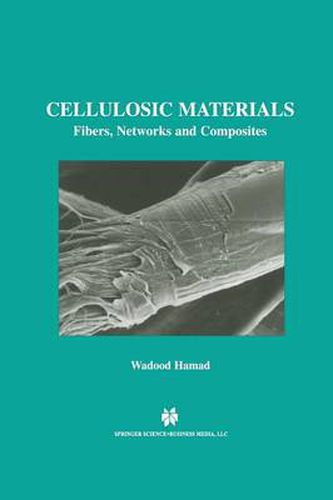Readings Newsletter
Become a Readings Member to make your shopping experience even easier.
Sign in or sign up for free!
You’re not far away from qualifying for FREE standard shipping within Australia
You’ve qualified for FREE standard shipping within Australia
The cart is loading…






This title is printed to order. This book may have been self-published. If so, we cannot guarantee the quality of the content. In the main most books will have gone through the editing process however some may not. We therefore suggest that you be aware of this before ordering this book. If in doubt check either the author or publisher’s details as we are unable to accept any returns unless they are faulty. Please contact us if you have any questions.
The objectives of this book are twofold: 1. To provide a thorough examination of the materials science of cellulosic fibers with emphasis on the characterization of structure-property relations, and 2. To advance knowledge of how to best analyze cellulosic fibrous networks and composites, and, ultimately, engineer novel
cellulose-based systems of superior performance and functionality. The design of new materials through the study of living systems, or bio-imitation, is burgeoning to become an established field, generally referred to as biomimetics. The latter, as with materials science, in general, prominently features multi-disciplinarity where new developments in mathematics, physics, chemistry and engineering continue to inspire novel areas of research and development.
The book is structured in five chapters which provide a sequential treatment of the running theme: deformation mechanics and the physical, morphological and mechanical characterization of native cellulose fibers networks and composites.
The heart of the book is Chapter 3, Damage Accumulation in Fibers, which treats the experimental methodology for fatigue testing of single fibers and the engendered results. In-depth examinations of the morphology, structure and chemical composition of native cellulose fibers, and the mechanics of deformation in these natural composite fibers are proffered in Chapters 1 and 2, respectively.
The fourth chapter, Fractal Simulation of Crack Propagation, presents a fractal-based approach to modeling damage accumulation in materials. Fractals lend themselves well to modeling such randomly-oriented phenomena as crack propagation and fracture.
The last chapter, Fibrous Structures: Networks and Composites, comprises analytical approaches for handling networks and composites.
$9.00 standard shipping within Australia
FREE standard shipping within Australia for orders over $100.00
Express & International shipping calculated at checkout
This title is printed to order. This book may have been self-published. If so, we cannot guarantee the quality of the content. In the main most books will have gone through the editing process however some may not. We therefore suggest that you be aware of this before ordering this book. If in doubt check either the author or publisher’s details as we are unable to accept any returns unless they are faulty. Please contact us if you have any questions.
The objectives of this book are twofold: 1. To provide a thorough examination of the materials science of cellulosic fibers with emphasis on the characterization of structure-property relations, and 2. To advance knowledge of how to best analyze cellulosic fibrous networks and composites, and, ultimately, engineer novel
cellulose-based systems of superior performance and functionality. The design of new materials through the study of living systems, or bio-imitation, is burgeoning to become an established field, generally referred to as biomimetics. The latter, as with materials science, in general, prominently features multi-disciplinarity where new developments in mathematics, physics, chemistry and engineering continue to inspire novel areas of research and development.
The book is structured in five chapters which provide a sequential treatment of the running theme: deformation mechanics and the physical, morphological and mechanical characterization of native cellulose fibers networks and composites.
The heart of the book is Chapter 3, Damage Accumulation in Fibers, which treats the experimental methodology for fatigue testing of single fibers and the engendered results. In-depth examinations of the morphology, structure and chemical composition of native cellulose fibers, and the mechanics of deformation in these natural composite fibers are proffered in Chapters 1 and 2, respectively.
The fourth chapter, Fractal Simulation of Crack Propagation, presents a fractal-based approach to modeling damage accumulation in materials. Fractals lend themselves well to modeling such randomly-oriented phenomena as crack propagation and fracture.
The last chapter, Fibrous Structures: Networks and Composites, comprises analytical approaches for handling networks and composites.